Bad data causes bad customer experiences
We’ve all experienced some version of this nightmare: We call the cable company about a problem, and they ask us to repeat who we are three times as they transfer us to various departments. It’s not because of some security requirement. It’s because the systems they use are out of sync.
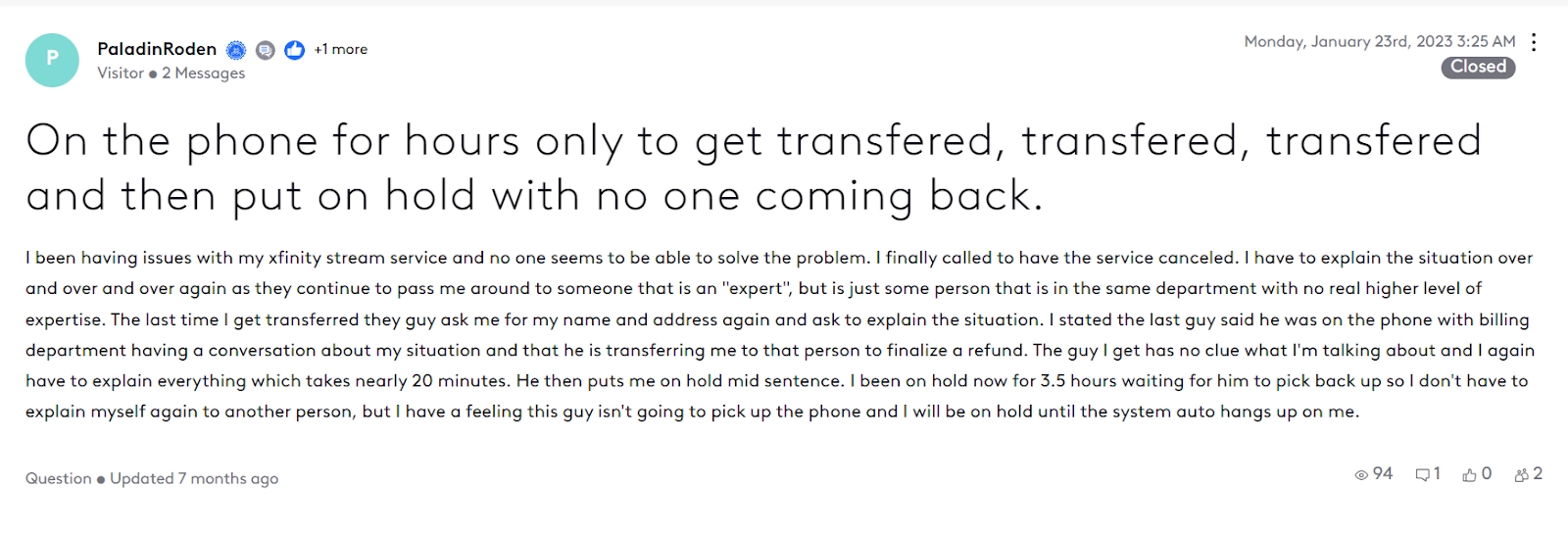
Every day, we encounter hundreds of examples of bad customer experiences: “Hello unknown” email campaigns, ads for things we’ve already bought, support agents who can’t see our account history…the list is endless. These poor customer experiences actively hurt revenue, brand, and customer loyalty.
It’s not a secret that better data is the only way to create delightful, personalized customer experiences. However, the problem isn’t a lack of data. In fact, it’s the opposite — businesses are overwhelmed by the amount of data they have. Cloud infrastructure will store 200+ zettabytes of data by 2025 and 75% of it is unused.
Then, why is it so difficult to use that data?
To free trapped data, we need to close the collaboration gap
Traditionally, the modern data stack has been cleanly split into business tools and technical tools. Data teams live in tools like Snowflake, dbt, and data management suites, business users work with data in Salesforce, HubSpot, and CDPs.
Companies have long been aware that empowering business teams to use more data benefits the customer. And the modern data stack is built around the idea that using good quality data to construct the models that feed the business is essential.
But the failure of solutions that address only one side of this challenge is this: building and using the right models requires decision-making, and that means getting the right people into the room.
The current system creates a bottleneck at the data team that limits velocity. And even worse, the divide between business users and data teams leads to inaccurate or ineffective models.
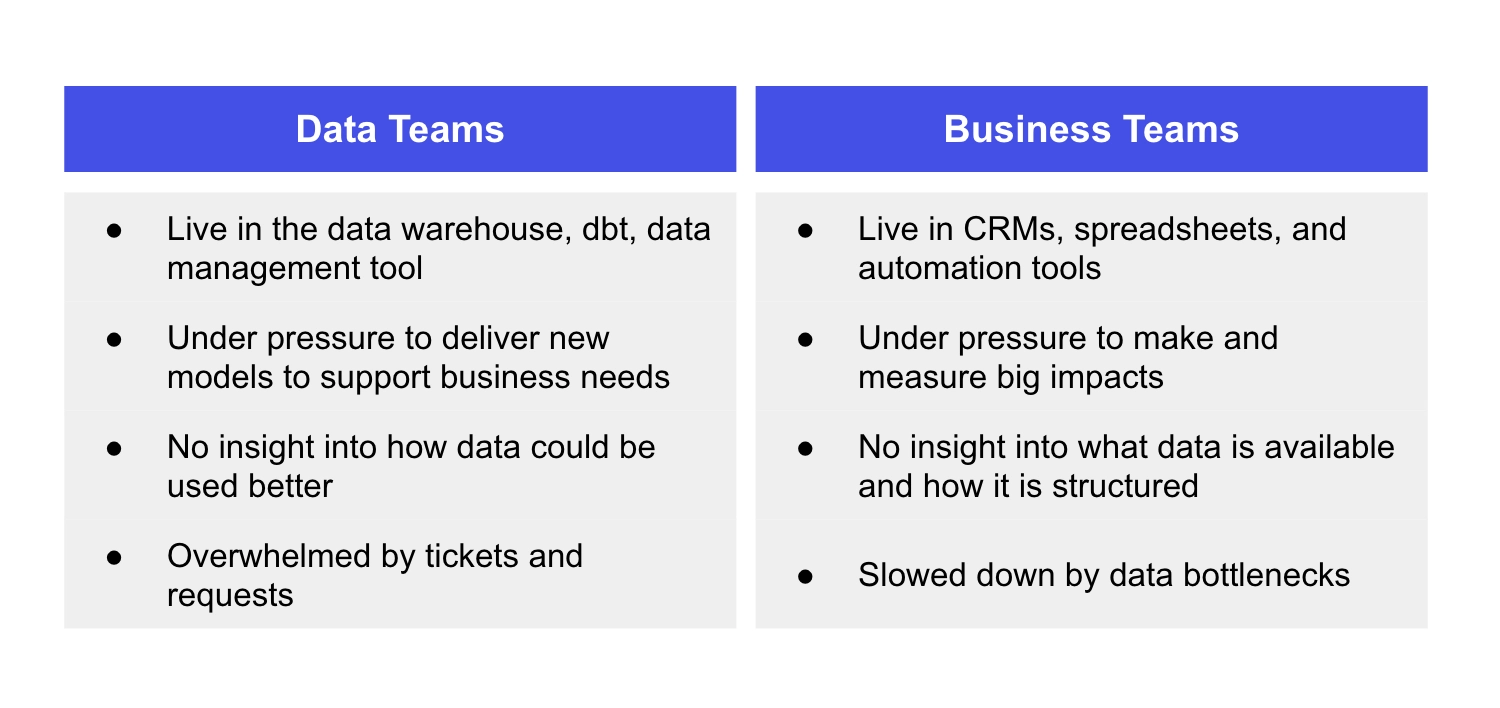
Better data, together
The solution is a single platform where business and operations teams can easily create, contribute, and validate datasets that support their needs while data teams can consolidate and govern them.
Bringing everyone into one platform has several key advantages:
- Tools that allow business users to create columns they need without submitting a ticket prevents them from transforming data in platforms that aren’t connected to your source of truth
- Governance is more effective when more data work is done in a platform the data team can monitor and manage
- Teams have the confidence in their data quality and security to activate not only among their own team, but to external partners and customers as well
The Universal Data Platform
Today, Census is taking on the collaboration challenge with the first Universal Data Platform. It combines activation, transformation and governance into a shared workspace for teams to collaborate.
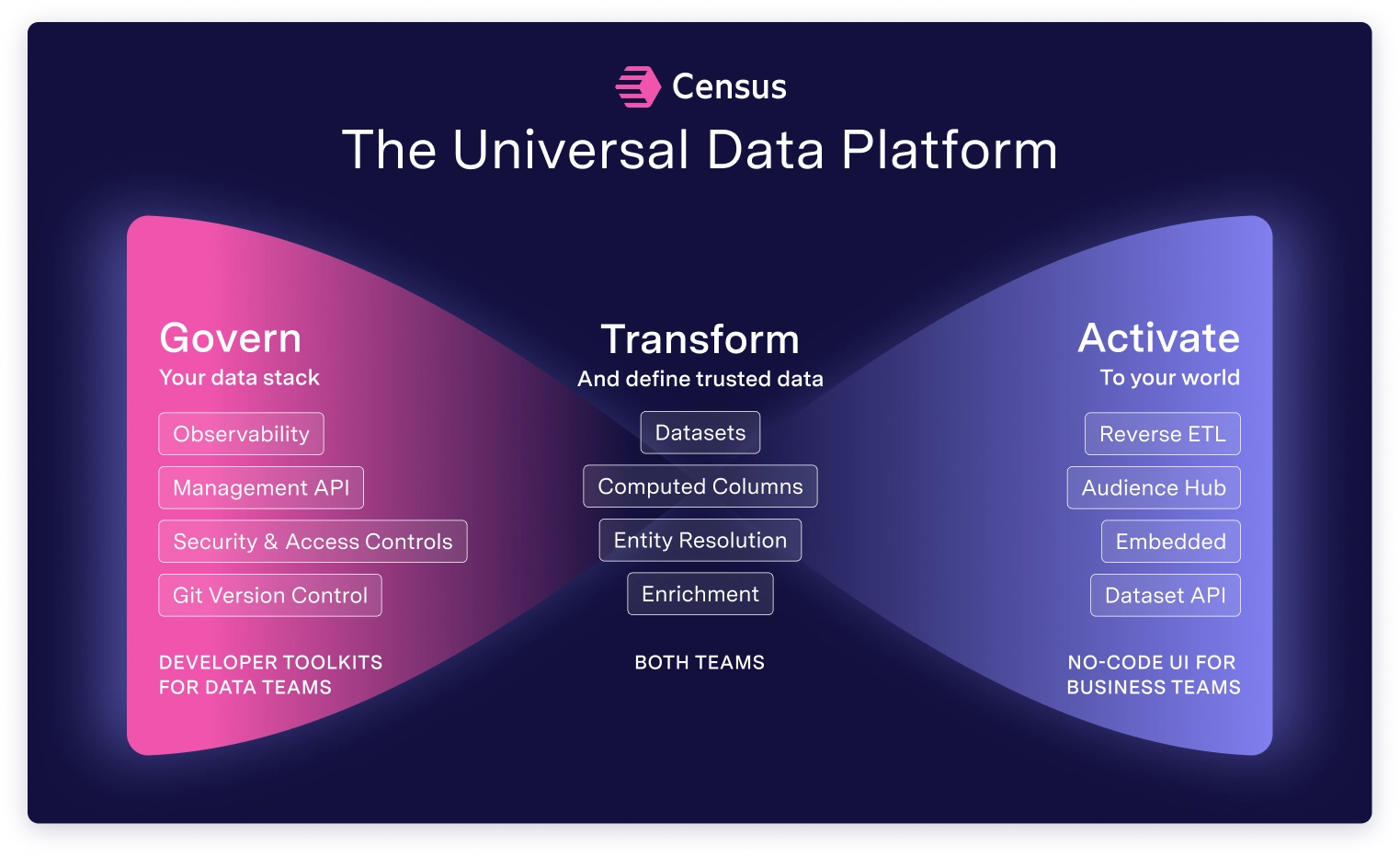
The UDP brings the advantages of being natively integrated with the data warehouse—flexibility, time to value, and lower cost—to traditional data management capabilities, including entity resolution, enrichment, and no-code transformation.
While there are tools built to serve either the data team or the business user, the UDP is the first platform built to solve the collaboration challenge and help teams build useful, trusted models.
Composable CDPs couldn’t solve for quality
The most common frustration we hear from our customers is that “my data isn’t ready.” While they are built for activation, composable CDPs don’t solve the fundamental problem that data needs to be clean, modeled, and standardized before it can be used. The UDP helps teams deduplicate and enrich data, align on models that need to be built, and activate in a fully governed environment.
A composable CDP is also first and foremost a marketing tool. It’s built for campaign launches and analysis. But the future of data is so much more.
Today, companies need to monetize their data by sharing it with external customers and partners. The rise of AI as another data consumer puts additional pressure on technical teams to create clean, governed datasets, as AI models running on bad data produce inaccurate results.
Our vision of a UDP addresses these challenges. Since we founded Census in 2018, our mission has always been to give everyone access to trusted data to grow their business.
Traditional data management keeps data a black box
Data management tooling includes capabilities for data integration, quality, lineage, enrichment, governance, and security.
The major drawback of these solutions is that they are wholly designed for technical teams. Like composable CDPs, they aren’t designed for the reality of how business is done. While they support governance and control, they aren’t set up for the level of trust and communication that truly actioning against data requires. And because they lack self-service capabilities for business users, they ultimately don’t relieve any of the pressure caused by growing demand for new models.
What does a Universal Data Platform include?
A Universal Data Platform includes capabilities that help data teams and business teams activate, transform, and govern standardized data models. It’s built on the philosophy that there is additive value in placing point solutions like audience segmentation hubs and modeling tools into one collaborative workspace.
While data teams are the ultimate owners of governance and quality, and business teams need the agency to command their activation workflows, transformation happens at all levels and should be taking place under the watchful eye of the data team.
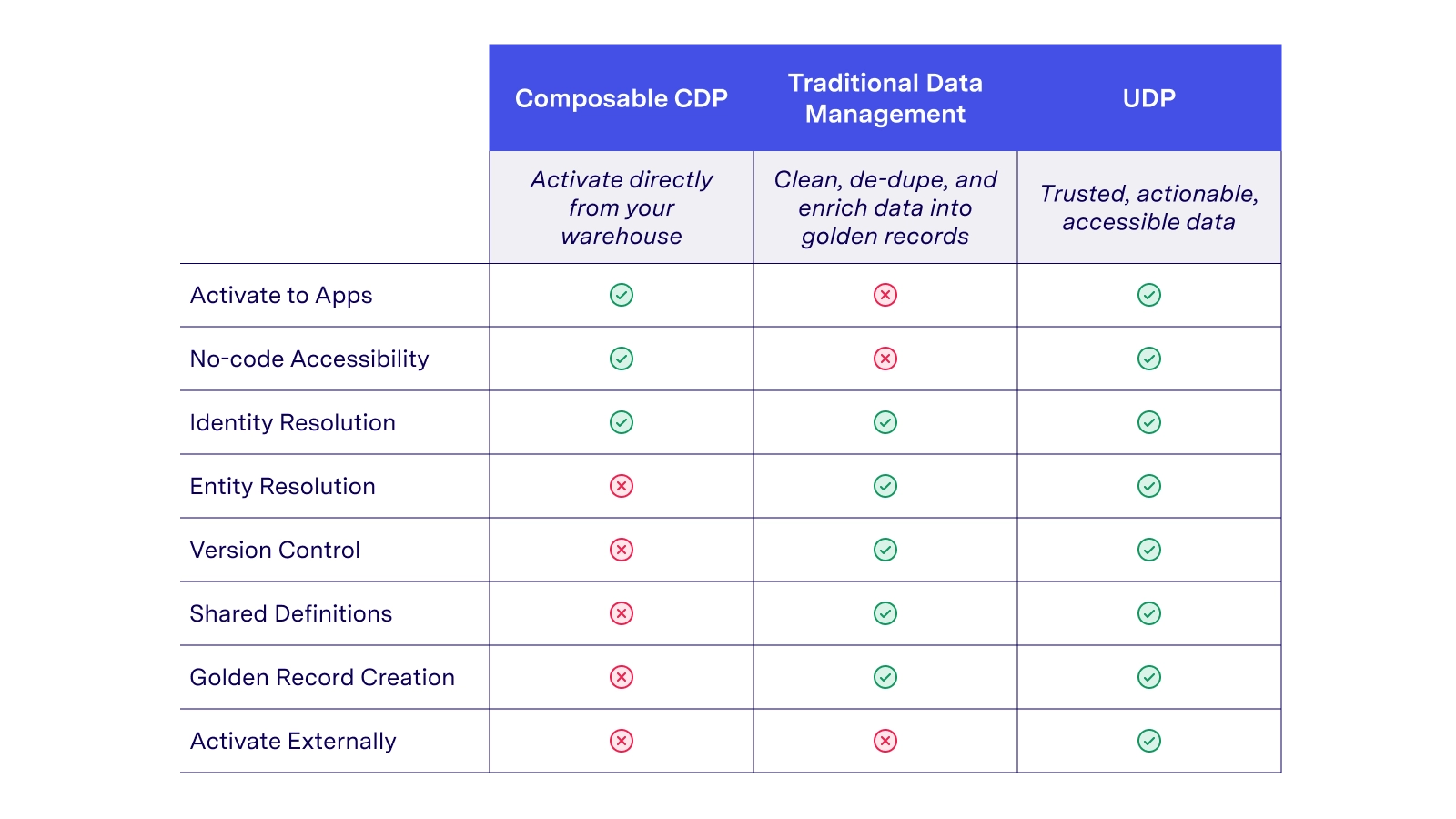
To serve this mission, we’ll be expanding our activation, transformation, and governance capabilities to produce the best version of the essential capabilities of a universal data platform.
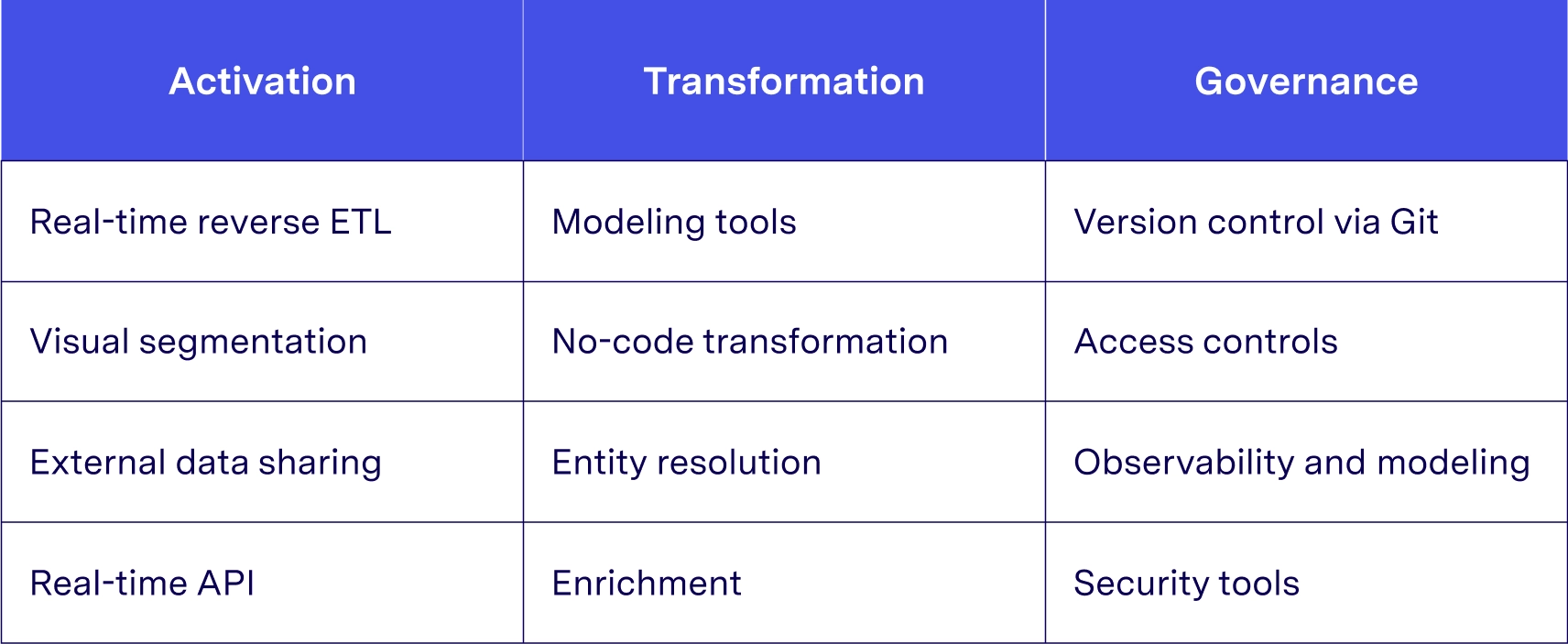
To learn more about the guiding philosophy we’re using to build the UDP, check out this vision statement by our CEO, Boris Jabes.


















